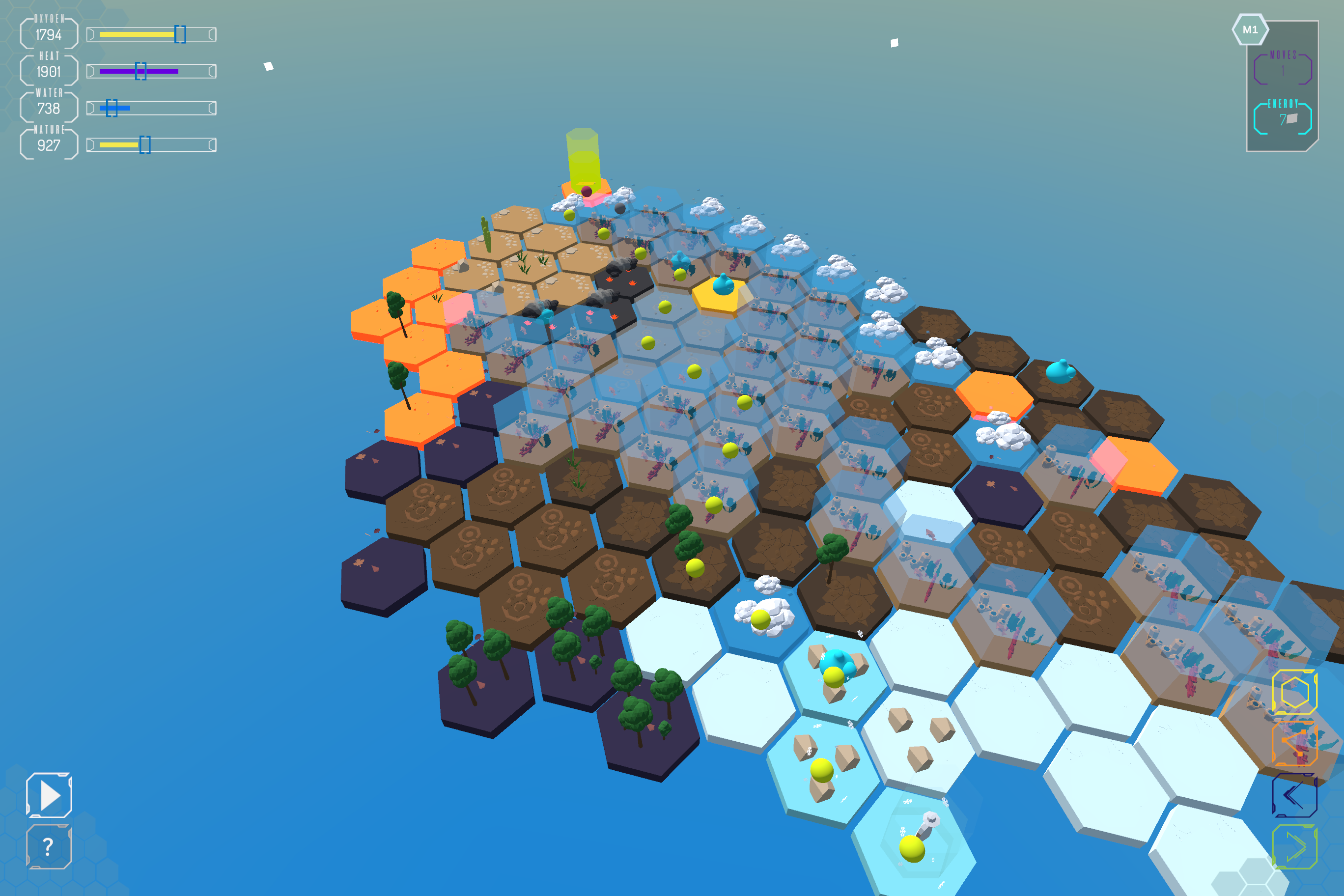Game Information
| Title | Hexostasis |
| Presenter(s) | Ahu Yolac |
| Session | Conference Reception, Game Exhibition, and Poster Session |
| Time | Wednesday, October 12, 7:00p-9:30p |
| Location | MSU Union Ballroom |
| Format | Game Exhibition |
| Screenshot |  |
| Description | Hexostasis is a puzzle video game that is created as a part of my Ph.D. Studies. The current version is its third iteration and currently, I'm working on the 4th iteration as a part of my scholarly research.
It is a game that brings thinking strategies from diverse disciplines (abstraction and decomposition from computer science, activity centered design and design problem approach from design, critical play from art education) and implements them in a transdisciplinary manner. Therefore, it is a prototype for a transdisciplinary educational game that teaches informal learning goals without being didactic. As I stated in my dissertation " It is a single player puzzle game. In the game, the players manipulate world builders where they are presented with challenges and problems to solve. This requires participants to think about the solutions that would work for their characters. The characters spawn randomly during each level. This means that even if a player has passed a level previously, they still need to find a new way when they are replaying the game. The game is formed of three connected systems to balance; resources-habitants, environment, and moving to the next level. Moving on to the next level is the small scale, level specific goal. Each little world is a puzzle that requires players to figure out a way to move on to the next level through teleportation points, in this case, the other world. First, the players change the terrain types, later they choose a path from the start to the finish tile, where the teleportation point is. If they can change the tiles within the given limit of movements and travel successfully within the given amount of energy, they pass the level. Therefore, changing the tiles takes away from the number of moves and the chosen path for their character takes away from the amount of the overall energy. There are four general categories of terrain tiles: air, water, earth and fire. Each of the four characters has more influence on one. For example, moving from their initial location to the finish point is not the same experience for all. If the tile type matches the character's influence, then they can pass it without costing as many powers as the other characters. Availability of these points is a part of the challenge where each level has a pool that all controlled characters use from collectively. Another challenge is the limit of moves. Using their moves, players can make changes on the tile-terrains. Therefore, they first form a layout then try to draw paths for each of their characters to the finish point within the given power restrictions. While paths for each character might be different, the player can select to have a similar path for multiple characters. Even though the path-energy relationship is restricting, there is a way of gaining power which is through habitants. Resources-Habitants are one of the important aspects of the game. They both inhabit the given world and can be used as power sources. According to the narrative, the habitants are a part of a hive minded creature. While the creature is willing to sacrifice some of the habitants for the better of its planet, it starts to die if the players abuse its sacrifice. The number of habitants varies from level to level according to the wished level of challenge. They appear on unoccupied tiles. While they present a way to create easy solutions for the limit of power, if their population decreases to a certain extent, the players automatically lose the game. This narrative gets presented to the players through pop-up conversation boxes which they can interact with. In the Environment, players have small and connected worlds to find their way around. Therefore, multiple puzzle worlds in a planet are connected to each other as multiple levels. At the same time, player actions affect the overall environment of the game at large. For habitants to live, there is an ideal environment balance that players should reach. This ideal consists of certain levels of oxygen, heat, water and nature for sustaining life of habitants within the game space. For instance, if players change a terrain with trees on it to a fire-type terrain, related aspects get affected, such as oxygen and nature levels will decrease, while heat will go higher if the fire continues to burn. Consequently, this action would affect the larger goal of the game which is to provide an environment that is optimal for the habitants through the collective decisions made within each level" Due to the nature of transdisciplinarity, it is difficult to separate the relationship between mechanics as some mechanics and game elements serve for multiple disciplinary learning outcomes. However, they can be briefly explained as; Abstraction, Decomposition, Design Problem strategies are encouraged through Environment, Tiles and objects, Moves and Rewind. Design Problem, ACD, Critical Play approaches are encouraged through Travel between teleportation points, Energy, Match/ unmatch of terrain-character types, Mapping, Rewind. Design Problem, ACD approaches are encouraged through Hive minded creature, Habitants, Energy, Narrative |
